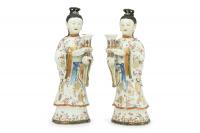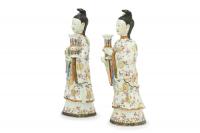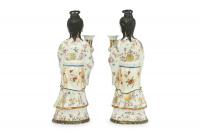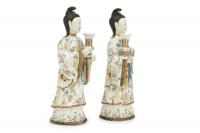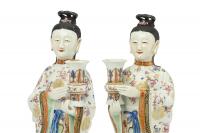
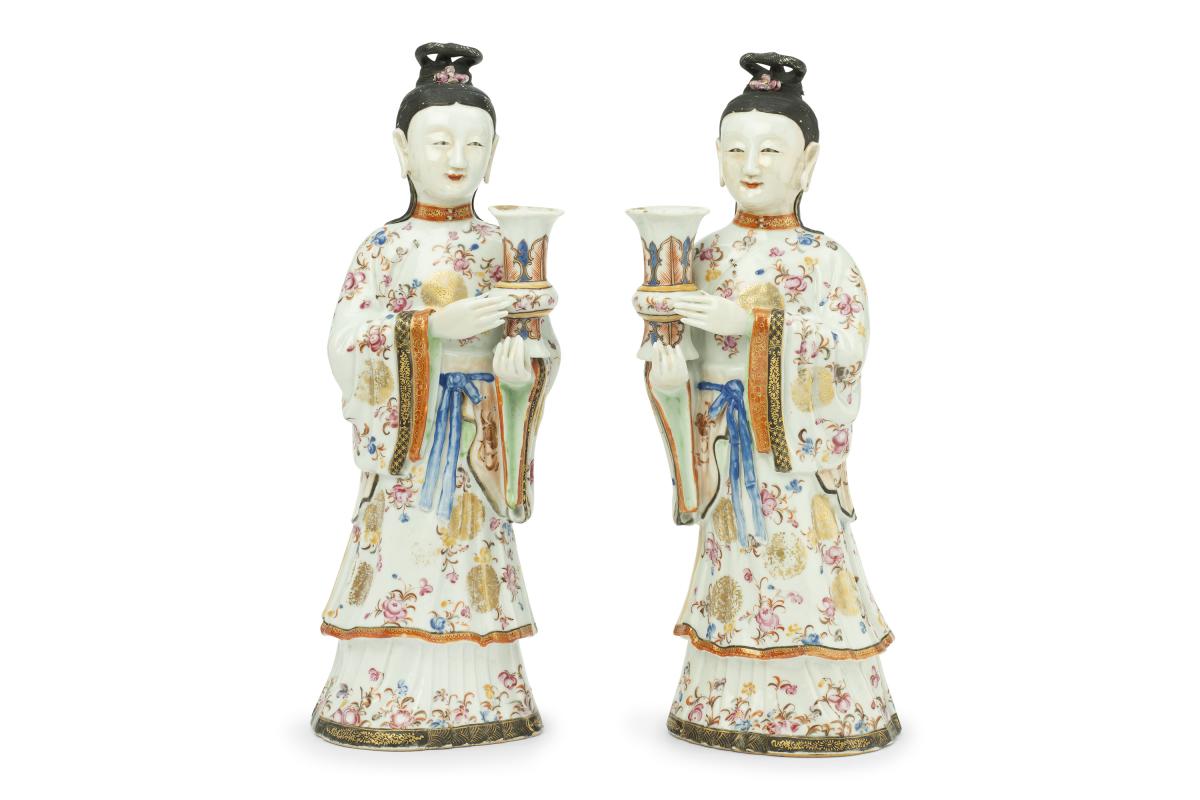
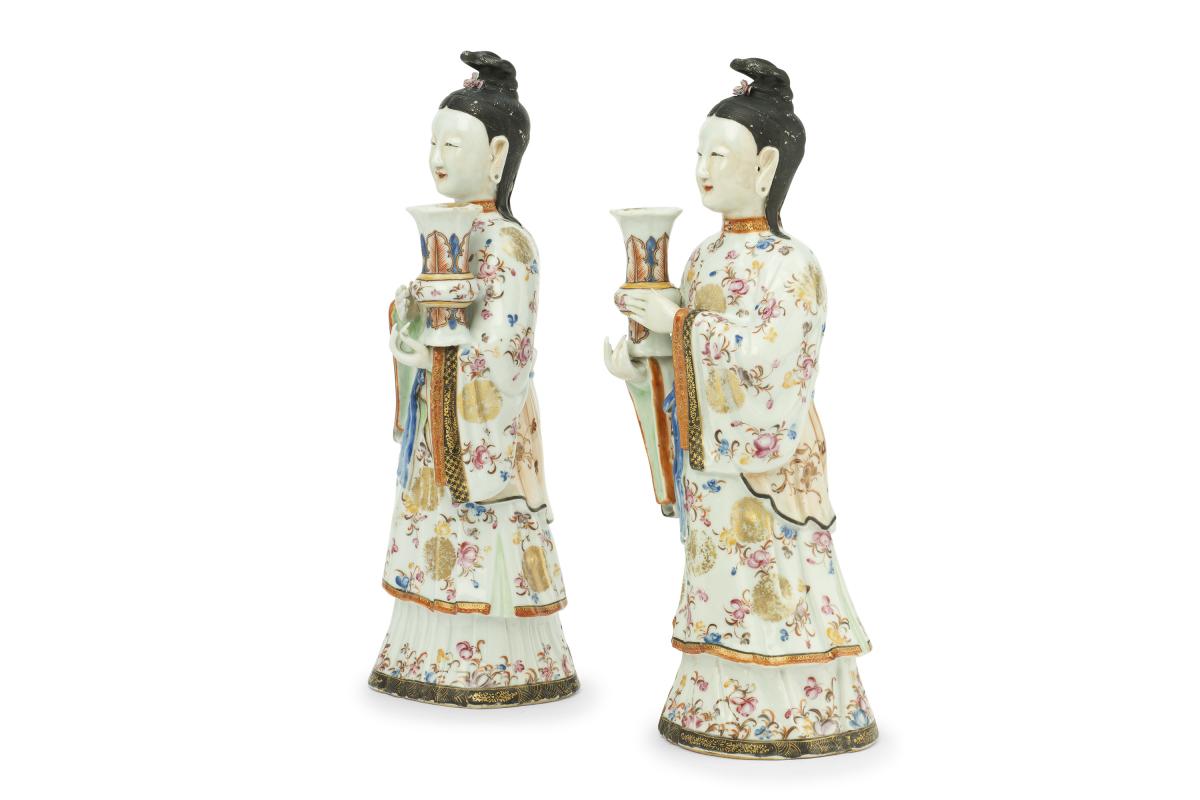
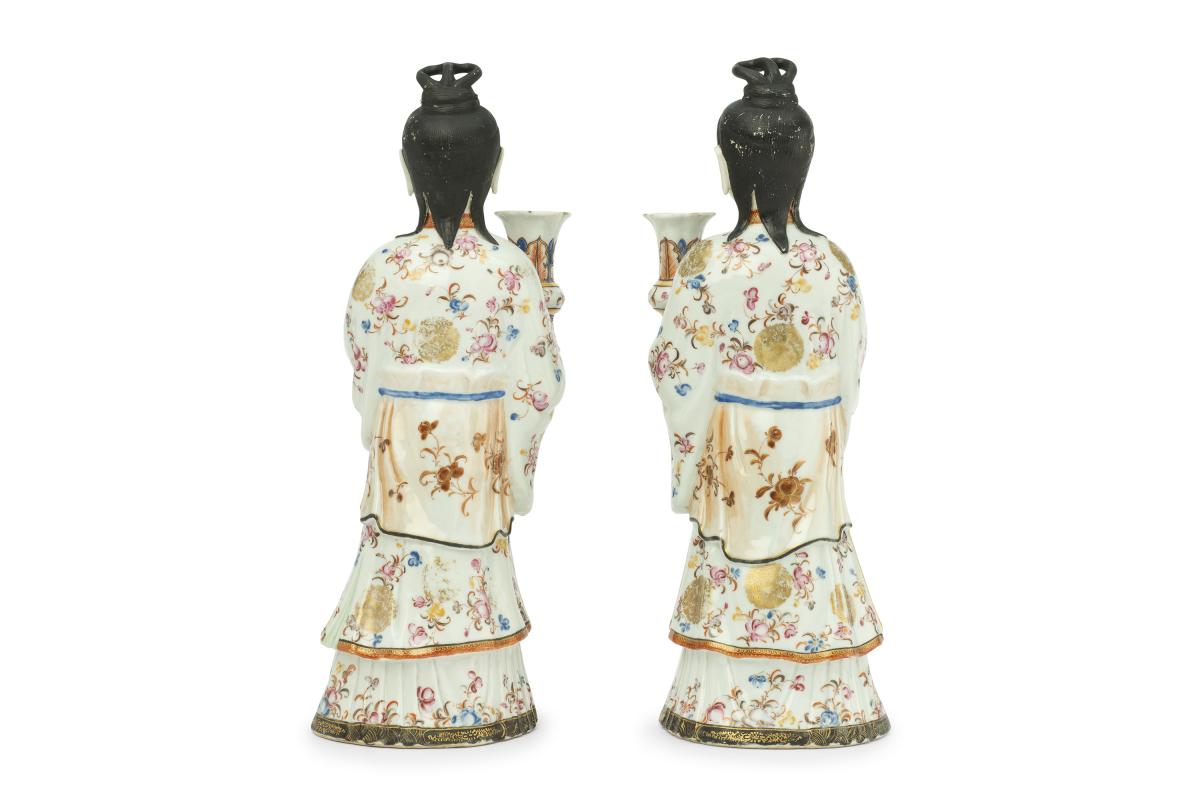
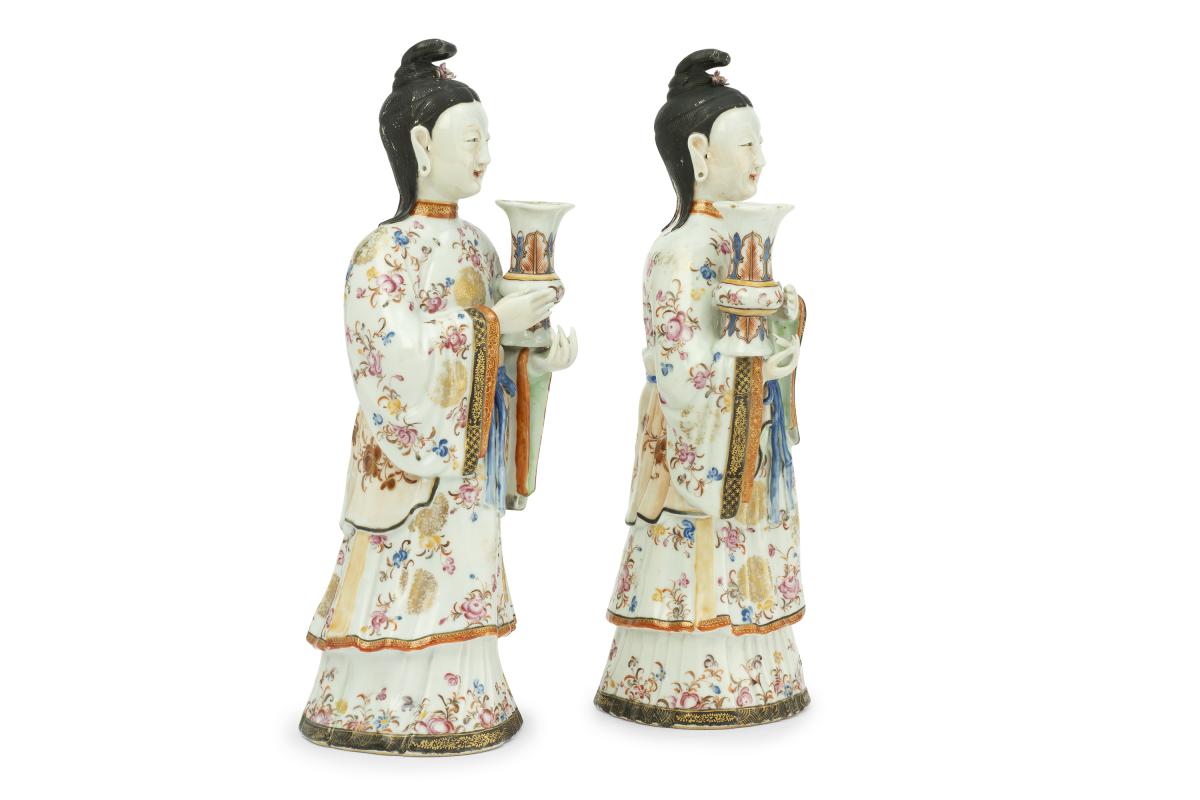
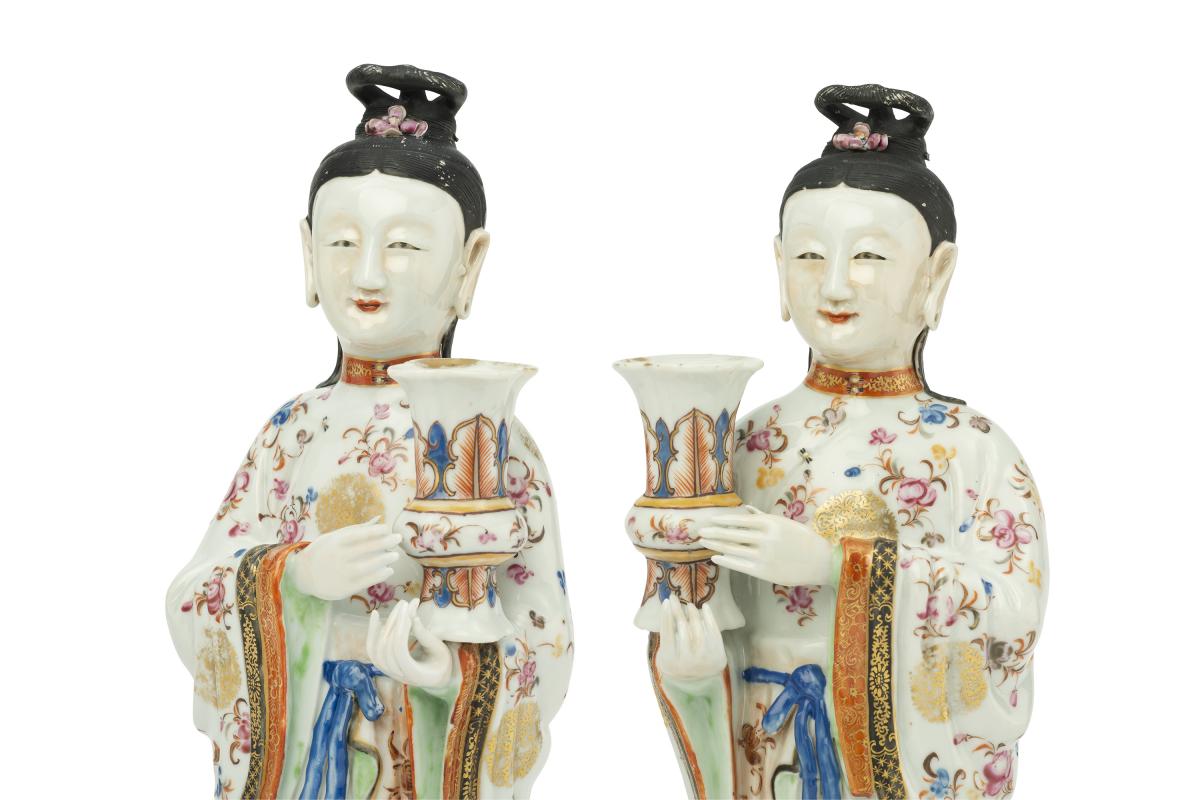
Price on application
This object is eligible for a Certificate of BADA Provenance
The BADA Standard
- Since 1918, BADA has been the leading association for the antiques and fine art trade
- Members are elected for their knowledge, integrity and quality of stock
- Our clients are protected by BADA’s code of conduct
- Our dealers’ membership is reviewed and renewed annually
- Bada.org is a non-profit site: clients deal directly with members and they pay no hidden fees
Pair of Candlestick Figures.
Porcelain decorated in overglaze polychrome enamels and gold.
China - Qing dynasty, Qianlong period (1736-1795).
Figures of Chinese maidens holding vases or large flowers, functioning as candleholders, were considerably popular in the Europe during the second half of the 18th century. They can be found in various poses and sizes, with the present pair being an example of the taller type.
The process of moulding porcelain figures was described in 1712 by François Xavier D’Entrecolles, a French Jesuit priest who lived in Jingdezhen during the latter decades of the Kangxi period (1662-1722): “Porcelain made in moulds, or by the hands only. Such are those pieces that are fluted, or representing several fancies; as animals, figures, idols, busts, bespoken by the Europeans, and the like. Mould-works of this sort consist of three or four pieces, which are joined to each other, and afterwards finished with instruments proper to hollow and polish them, as well as to add several strokes, which they do not receive from the mould. As for flowers and other ornaments that are not in relief, but in intaglio, they are impressed on the porcelain by seals or stamps. They also apply reliefs, ready prepared, much in the same manner as gold lace is put on a coat. What follows, relating to moulds, I have lately been an eyewitness of myself. When they obtain a model of any required piece of porcelain, which is such that it cannot be made by hand on the wheel, they impress on the model some moulding-clay, and when this has been properly impressed it is cut up into pieces of pretty large size, which are left to stiffen. (…) These sorts of works are very troublesome to make and in great request. When the work is finished, it is varnished and baked, after which they paint it, if it be desired, with several colours, and gild it, baking it a second time. This kind of porcelain, which is made with great care, is of course very dear...”
A rare depiction of Chinese artists hand modelling and moulding porcelain survives in an album of 24 watercolour paintings presently at the Peabody Essex Museum in Salem, Massachusetts (inv. E81592.10). Candlesticks modelled as Chinese ladies can be found in the Peabody Essex Museum, the Metropolitan Museum of Art in New York, and the Victoria and Albert Museum in London, among other private and public collections.
Dimensions
H. 42 cm L. 18 cm W. 15 cmThe BADA Standard
- Since 1918, BADA has been the leading association for the antiques and fine art trade
- Members are elected for their knowledge, integrity and quality of stock
- Our clients are protected by BADA’s code of conduct
- Our dealers’ membership is reviewed and renewed annually
- Bada.org is a non-profit site: clients deal directly with members and they pay no hidden fees


